Recent Posts
Prepare Now for the Peak of Hurricane Season
8/28/2023 (Permalink)
The peak of the Atlantic hurricane season is September 10th, with most activity occurring between mid-August and mid-October, according to the National Oceanic and Atmospheric Administration. Do not wait to prepare yourself for a hurricane when a storm forms in the Atlantic and stores are filling with shoppers looking for emergency supplies.
There are steps that you can take now to ensure you and your household are more prepared for the peak hurricane season:
- Build a survival kit. You and your household should be prepared to shelter in a secure and safe location for several days after a disaster when roads may be impassable, gas stations and grocery stores closed, power and communications being out. Common items are water—drinking and sanitation, food, medication, first aid kit and hygiene products.
- Make a Family Communication Plan. Choose an out-of-town friend or relative as a point of contact. Make sure children have emergency contacts memorized or saved in a secure place. Determine a safe, familiar place the family can go to reunite.
- Stay Informed. Listen to local officials for the most up-to-date information before, during and after a disaster. Keeping a battery or solar-powered radio to receive disaster notices and updates in your survival kit is key.
NOAA on 2023 Hurricane Season
5/22/2023 (Permalink)
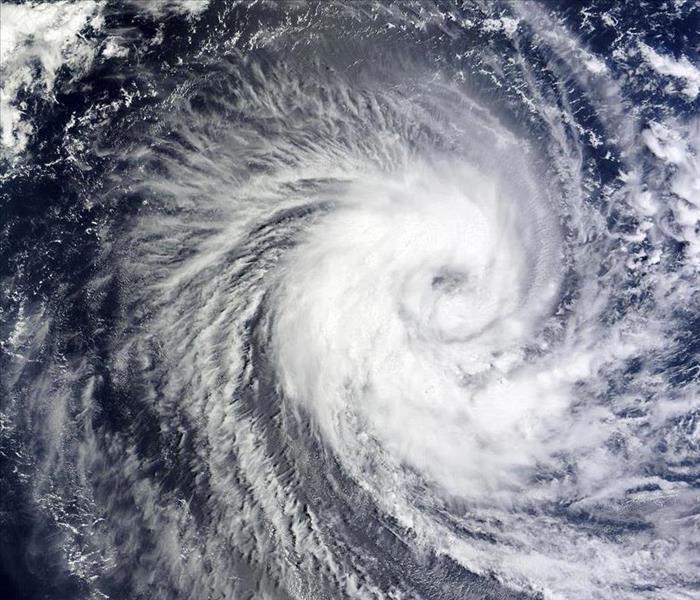 2023 Hurricane Season begins June 1st.
2023 Hurricane Season begins June 1st.
The National Oceanic and Atmospheric Administration is scheduled to issue its outlook for the 2023 Atlantic Hurricane season. The NOAA will discuss the expected number of storms and climate factors that will influence hurricane development. They will also provide advice on how to prepare for the upcoming hurricane season which officially begins on June 1st. The NOAA will also discuss their readiness for the season showcasing new products and upgrades to enhance forecasting and operations.
Hurricane names for the 2023 season have been released. There are new names in the rotation that will replace Harvey, Irma, Maria, and Nate. Those names will be replaced with Harold, Idalia, Margot, and Nigel.
Don’t forget to tune in on Thursday, May 25 to hear all about the 2023 Atlantic Hurricane Season!
Fire Safety Facts
5/18/2023 (Permalink)
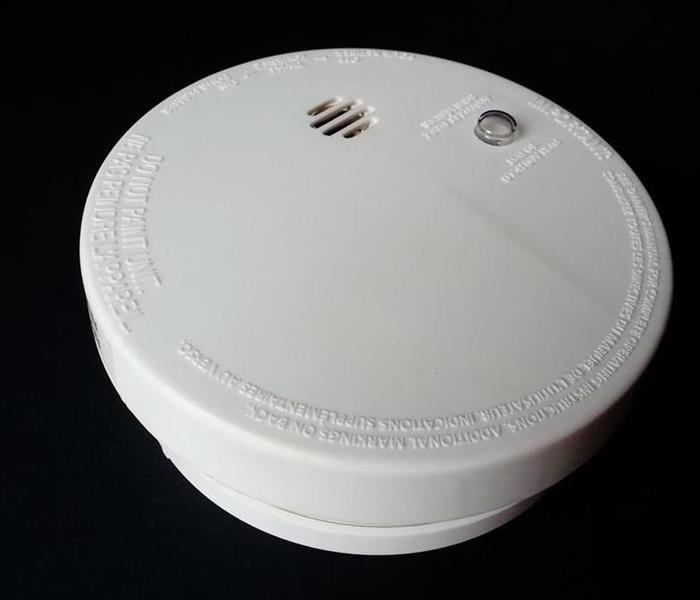 Smoke detectors can help keep you safe in the event of a fire.
Smoke detectors can help keep you safe in the event of a fire.
Fire safety comes in many forms. Here are some facts that can provide some insight into fire safety.
- A closed door may slow the spread of smoke, heat, and fire.
- Smoke alarms should be installed inside every sleeping room, outside of each sleeping area, and on every level. Smoke alarms should be connected so when one sounds, they all sound.
- Roughly, three out of five fire deaths happen in homes with no smoke alarms or no working smoke alarms.
- Fires most often start in the kitchen. Almost 30 percent of fires start in the kitchen because this is primarily where open flames are used.
- Cooking and heating cause the most fires.
If a fire occurs in your home, GET OUT, STAY OUT and CALL FOR HELP. Never go back inside for anything or anyone.
Commercial Cleaning Services
5/18/2023 (Permalink)
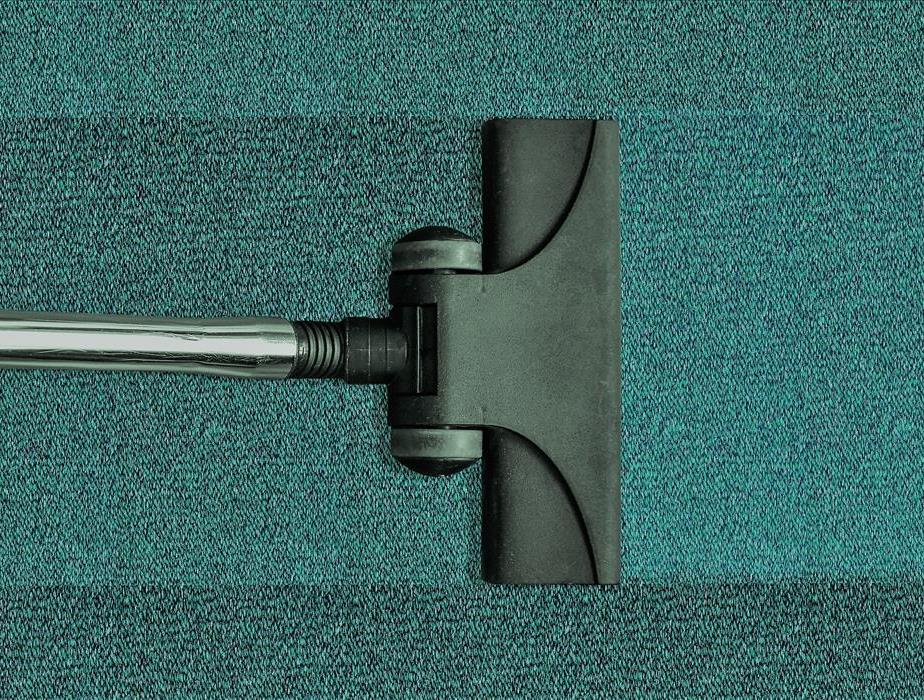 SERVPRO can help make your workspace clean.
SERVPRO can help make your workspace clean.
With SERVPRO’s commercial cleaning services, you won’t have to worry about the common wear and tear of your buildings or offices. When grit/grime, moisture, and odor overwhelm a standard janitorial service, call SERVPRO of Beaumont. You can rely on us to make your workspace the cleanest it’s ever been.
SERVPRO of Beaumont will get it done right the first time with our:
- Award-Winning Training
- Nearly 50 Years of Experience
- Proprietary Cleaning Products
Specialty Cleaning Services
SERVPRO offers a broad scope of cleaning services - from bloodborne pathogens to mold to fire/water restoration. Our technicians have specialized training and products to effectively clean your business and make it "Like it never even happened." We can do it all:
- Air ducts & HVAC
- Biohazard and Crime Scene
- Carpet & Upholstery
- Odor Removal
Sewage - Trauma and Crime Scene
And much more - Call us today at 409-212-1977!
3 Ways to Protect Your Home During a Flood
12/5/2022 (Permalink)
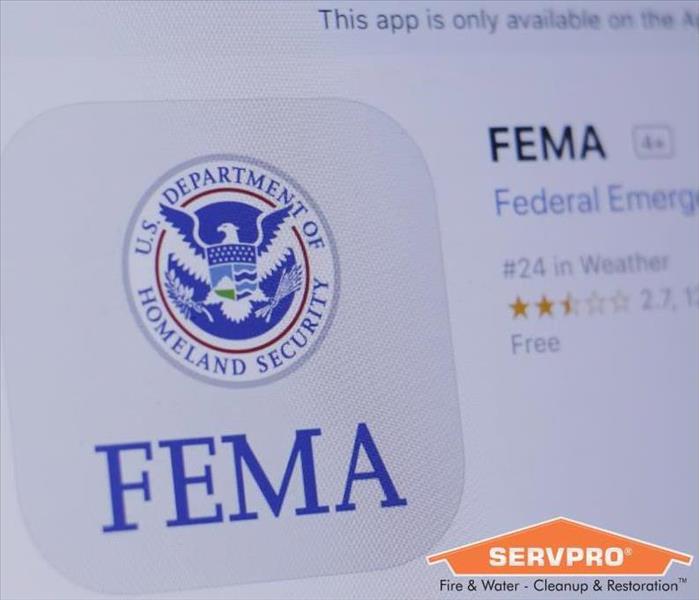 FEMA will assist with recovery and rebuilding efforts, there are things that you can do before and after a flood to help protect your property.
FEMA will assist with recovery and rebuilding efforts, there are things that you can do before and after a flood to help protect your property.
3 Ways to Protect Your Home During a Flood
Floods can happen at any time, and it's important to be prepared for them. If you live in an area that's prone to flooding, there are a few things you can do before a flood strikes so that you're ready when it does.
Seal any cracks in your home’s foundation.
After you've assessed the damage, it's time to patch the cracks in your foundation. You'll need a waterproof sealant like caulking or silicone sealant for this job. If you have silicone-based paint, use that instead of a separate caulking product because it can also be used as an adhesive for other materials like wood and metal.
First, apply the sealant to both sides of the crack, then smooth out any excess with a putty knife. Make sure you get all around the edges so there aren't any gaps where water could eventually seep through and damage your home again.
Maintain drainage areas.
- Maintain drainage areas
- Grass should be trimmed short to avoid clogging gutters, and trees and shrubs should be trimmed to ensure that water flows away from the house.
- Make sure your gutters are clean and free of debris.
- Keep downspouts clear of leaves and other debris so water can drain properly into the ground rather than pooling around your foundation or flowing toward your basement.
- Clean out rain barrels, which collect rainwater that then drains into soil rather than running off toward storm drains or sewers (and possibly flooding).
Install a sump pump.
If your home is in a flood zone, you should consider installing a sump pump. Sump pumps are used to remove excess water from the lowest part of your basement or crawl space and safely discharge it away from the house. You can also find sump pumps that feature battery backup units (BBUs) and remote monitoring technologies—these will allow homeowners to check on their sump pump remotely in case there's ever a problem with it.
If you live near a body of water or have experienced flooding at some point, consider installing this essential piece of equipment today!
Know what to do before, during, and after a flood.
The best way to protect your home is to be prepared. While the Federal Emergency Management Agency (FEMA) will assist with recovery and rebuilding efforts, there are things that you can do before and after a flood to help protect your property. Flood insurance differs from homeowner's insurance in several ways, so it's important to know the difference. It's also helpful to know what actions you should take before, during and after a flood occurs so that you can prepare accordingly:
Before a flood happens:
- Make sure all your homeowners' contents are insured—this includes appliances, electronics, furniture and clothes. You may have additional coverage from certain policies or other types of insurance (such as renters or car insurance).
We all want to protect our Amelia, TX homes, and there are many things you can do to do just that. As with any disaster, it's best to be prepared before it happens. But if you are still unsure about how best to prepare for a flood or other natural disaster, it's always good to know where your local emergency management office is located so that they can help answer any questions or concerns.
How Do I Replace A Toilet?
11/1/2022 (Permalink)
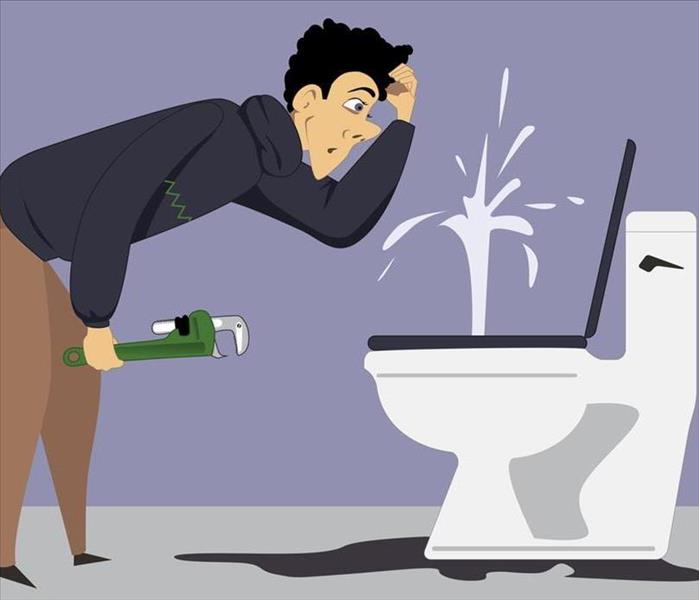 If you think your toilet is leaking or not working as well as it should, replace it.
If you think your toilet is leaking or not working as well as it should, replace it.
How Do I Replace A Toilet?
Replacing a toilet can seem like an overwhelming task, but it's not. The average DIYer can typically complete this project in about six hours. Here are the step-by-step instructions for replacing a toilet:
Cut the water supply, flush toilet, and sponge all remaining water from tank and bowl.
- Cut the water supply to the toilet, then flush it to drain any remaining water.
- If you have a frost-free refrigerator or freezer, turn off its power switch and remove all food from inside (this will help prevent damage).
- Unscrew any mounting bolts that are holding the hot water tank in place and lift it out of its housing; don't worry if some piping comes with it because you can reattach these later.
Disconnect hose leading to bottom of tank.
Now that the tank is out of the bowl, you can disconnect the hose leading to the bottom of the tank. You may have to loosen or unscrew a clamp holding it in place before pulling it free. The water supply should now be disconnected from your toilet.
To lift out your old toilet, shift your weight slightly toward one side and lift it straight up until you can set it aside.
Unscrew the nuts that connect the tank to the bowl, remove tank and set aside.
- Unscrew the nuts that connect the tank to the bowl, remove tank and set aside
- Remove any remaining water from inside the toilet bowl with a sponge or towel
- Remove old wax ring from underneath where you will replace it (usually a square piece of plastic).
Remove nuts that hold bowl to floor, lift straight up on bowl and set aside.
To replace the toilet, you'll need to remove the nuts and washers that hold the bowl to its base. To do this:
- Remove the nuts on each side of your toilet using socket set or wrench.
- Lift straight up on the bowl and set it aside.
Remove any wax ring or putty that remain around drain collar on floor.
- Remove any wax ring or putty that remain around drain collar on floor.
- Use a putty knife to scrape off any old putty, if there is any.
- Clean the area around the drain collar with a sponge and mild detergent, then use dry paper towels to dry it thoroughly.
Install new wax ring onto new toilet base.
- Place the new toilet base on wax ring.
- Press down firmly so that it adheres to the wax ring (no rocking). Ensure a tight connection between toilet base and wax ring. If you have a leak, tighten the connection between the toilet base and wax ring by adding more plumber's putty or tightening with adjustable wrench as needed.
Set new toilet in place and press down firmly so that it adheres to the wax ring (no rocking).
Once the new toilet is in place, you must press down firmly to ensure that it is properly seated on the floor. If you see any rocking motion, then there may be an issue with the wax ring, and you should check for leaks before proceeding further.
If no leaks are present and your toilet is not leaking after pressing down firmly on it, then proceed to connect water supply lines and test operation of the new toilet.
Reattach the new and old water line, ensuring a tight connection.
To reattach the new and old water line, ensure that the water supply is turned off. Then, make sure that your new toilet is level with your old one and secure. The last thing you want is for it to start shifting around on you during installation. If need be, use a wrench to tighten the bolts so they're nice and tight.
Replace your toilet if you think it is leaking or not working well — but if leaks persist call a professional plumber
If you think your toilet is leaking or not working as well as it should, replace it. But if you are not sure and want to check if there is a leak, first check the water level in your tank. If the water level is lower than normal, check for leaks at the base of the toilet by submerging a towel under it and checking on both sides; look for wet spots under the tank lid and base.
If you think there may be a leak but are unsure how to fix it yourself (or hire someone to do so), here's how to replace a toilet:
- Turn off the power source or flush handle/valve assembly that serves as an access point for stopping wastewater flow from pipes leading from your home’s plumbing system
- Unscrew bolts holding down flange between bowl unit and floor with socket wrench; remove flange from bowl unit
You can replace your toilet and save money. The first step is to turn off the water supply, disconnect the old tank and bowl, remove the old wax ring, and set aside. Then, install a new wax ring onto the base of your new toilet (not into floor). Finally, set it in place and press down firmly so that it adheres to the wax ring (no rocking). Reattach old water line to new toilet base ensuring a tight connection before turning on water supply once again!
How do I protect my business from fire disaster?
10/19/2022 (Permalink)
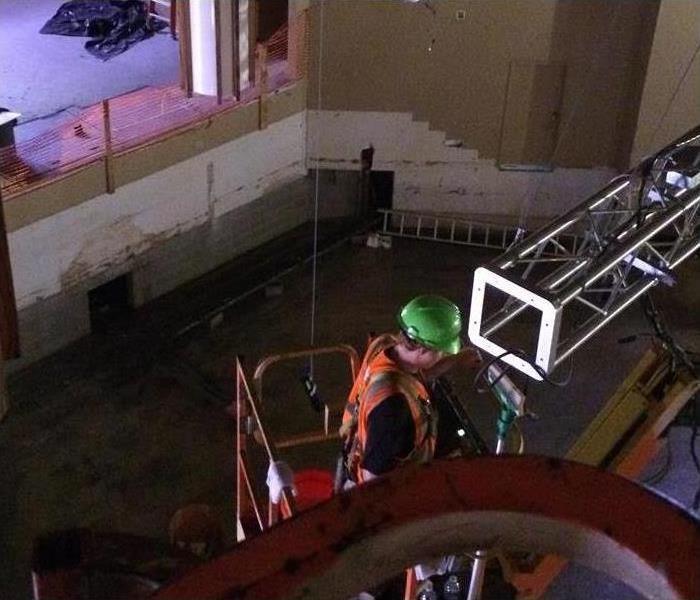 Church fire in the Beaumont area.
Church fire in the Beaumont area.
How Can I Protect My Company From A Fire?
Fires in a business can be devastating and cause significant damage. Fires in the workplace can be particularly damaging for several reasons. For one thing, most businesses are not prepared for a fire disaster. They may not have fire extinguishers or alarms set up properly. You need to anticipate any potential dangers that could lead to fire hazards within your workspace so that you can be prepared when something does happen. Here are some tips on protecting your business from fire disasters:
Planning Ahead for a Fire
First and foremost, it’s important to be prepared for a fire. You need to make sure you have a plan for your employees, as well as for how your business might be impacted during an evacuation and after the fact.
If you’re in the Beaumont, TX area, we recommend calling our office immediately if you ever suspect that your property is at risk of being damaged by fire or smoke. Our team has experience handling these situations on a regular basis, so let us help guide you through this process to minimize any damage done to your business!
Your Fire Plan
- Have a fire escape plan:
- Check your smoke alarms at least once a month and change the batteries when you do.
- Keep all combustible materials (paper, cardboard, etc.) away from heat sources like stoves and heaters.
- If you have others in your home or workplace, make sure they're familiar with the route out of the building in case of an emergency.
Inspecting Equipment Regularly
You can have regular inspections of your equipment and wiring to reduce the risk of a fire.
- Make sure that your fire extinguisher is in good condition, and that you know how to use it.
- Ensure that your equipment is well maintained, so it doesn’t cause an electrical fire or spark a grease fire in the kitchen.
- Test smoke detectors regularly, and replace batteries as needed.
Protecting Yourself, Others, and Your Space
Fire prevention and protection are not just a matter of good business sense. They're also a legal requirement in some areas. If you don't have a planned fire safety policy in place, you could find yourself liable for damage caused by an uncontrolled fire in your building.
To avoid expensive lawsuits and fines, follow these tips:
- Make sure that all employees are trained on how to use the fire alarm system and what exits to take when the alarm sounds
- Have regular inspections conducted by a qualified professional (such as an electrician) to ensure that wiring is up-to-code, appliances are installed correctly and safely maintained, etc.
- Install smoke detectors throughout your building
Conclusion
All in all, it’s important to remember that fire prevention is not something that you can do once and then forget about. It’s a constant process of looking for ways to improve your business so that it’s as safe from fires as possible. The tips we’ve given here are just some of the many ways you can do this—and they should be at the top of your list if you want to protect yourself from fire disaster!
How Is Sewer Damage Cleaned? Essential Steps You Don't Want To Skip
8/27/2022 (Permalink)
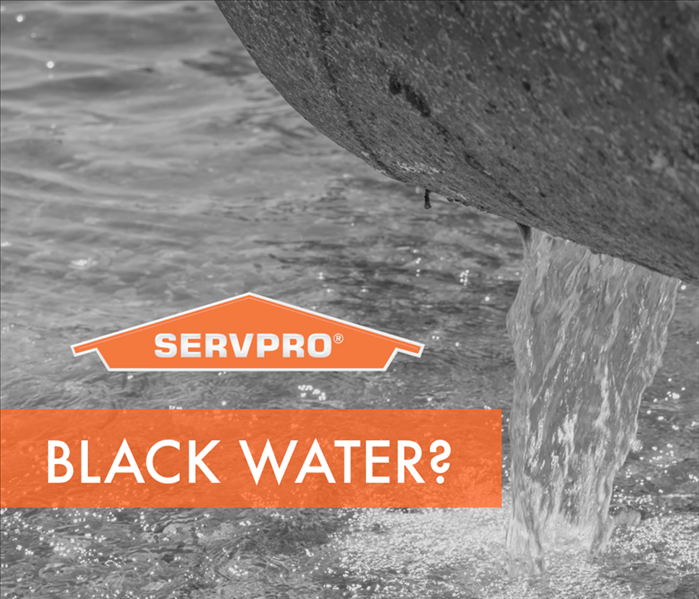 Don't let black water sit and linger.
Don't let black water sit and linger.
How Does Sewer Damage Get Cleaned? You Don't Want To Miss These Steps
Sewer cleanup requires more than a mop, towel and bucket of cleaner. This fluid, known as black water, consists of high levels of mold spores and bacteria, which can absorb into your floors and walls. To ensure your commercial space is sanitized thoroughly, following specific guidelines is imperative. The following are four steps you don't want to skip.
1. Discover the Cause of the Sewer Backup
Cut off the water supply to the bathroom and, before cleaning, locate the reason the overflow occurred. Common causes include blockages from hair, personal products and grease. Lines under the ground may also suffer corrosion or cracks, particularly from tree roots.
These issues are hard to see; therefore, call water restoration experts in Elizabeth, TX, to inspect the plumbing. They have innovative technology to scope the pipes and assist in the cleaning stages.
2. Assess Water Exposure
Sewer water is classified as category three contamination because it contains a host of organisms such as bacteria and mold. A group of specialists should examine the impacted space, gathering specimens of the air and materials. This information allows team members to establish a sewer cleanup plan specific to your company's needs.
Water migrates easily, spreading through the drywall, ceiling and floors. You may not realize the extent of dampness. Teams use moisture readers to pinpoint affected zones.
3. Minimize Secondary Damage
Water penetrates porous material, allowing organisms to migrate into your walls, floors and valuables. Before cleaning, concentrate on mitigating spore reproduction and structural rot.
Certified technicians evaluate your room's contents for concern. They remove unaffected pieces to avoid further harm. In addition, the flooded toilet delivered excess moisture and humidity. Extract that dampness efficiently using air movers and industrial dehumidifiers.
4. Sanitize and Restore
Wash and scrub down nonporous items using an antimicrobial treatment. Teams can use high-tech equipment to deodorize the location. Then, attention turns to rebuilding, returning the premises to proper working order.
Don't let black water sit and linger. Follow proper sewer cleanup protocols to ensure to reduce water and organism exposure.
How To Lower Your Business Interruption Insurance Claim
8/27/2022 (Permalink)
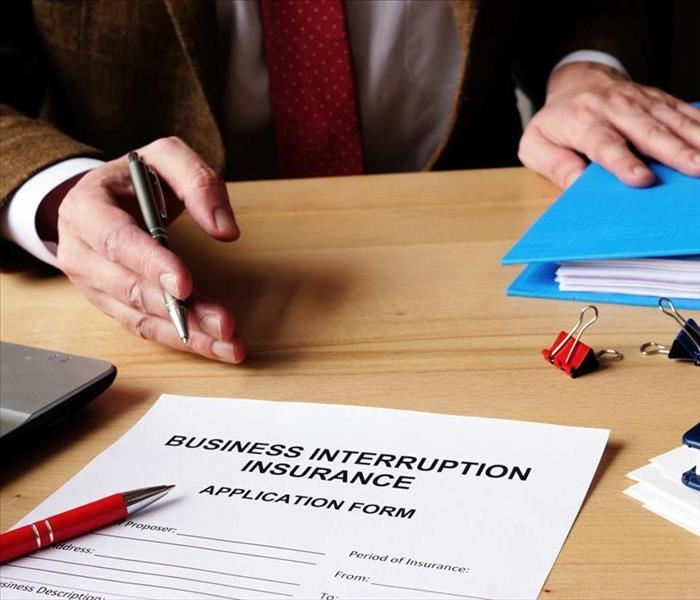 You can lower your business interruption insurance claim and get back on track.
You can lower your business interruption insurance claim and get back on track.
How To Reduce Your Insurance Claim for Business Interruption
If your building in Beaumont, TX, experiences a water-related incident such as flooding from a broken pipe, you may be forced to halt business operations until repair and restoration efforts are completed.
Business interruption insurance is designed to provide compensation for lost income during this time. The standard period of coverage is 30 days, but what if restoration efforts take longer than that?
There are many many factors that affect the duration of the restoration process, such as the extent of the water damage, the quality of restoration services rendered, and the effectiveness of communications with your insurance provider.
Here are several ways to promote a quick recovery and lower your business interruption claim.
1. Address Flooding Promptly
Flooding can damage just about anything in your building, including walls, ceilings, floors, equipment, and paper documents. If water is left to sit, mold growth can occur within a day or two, which will complicate restoration efforts and likely prolong the restoration process. If you address large water damage as soon as possible, you can shorten your building's recovery time.
2. Hire Professional Restoration Services
Water damage to commercial buildings often requires professional restoration services. It is important to contact a team of professionals quickly so that you can restore as much of your property as possible. The team will also be able to ensure that all water is removed so that you can avoid mold growth.
3. Keep Detailed Records
Take photos of every incidence of damage from multiple angles. Keep records of all communications with the restoration company and the insurance company. Inadequate record-keeping and ineffective communication can lead to a claims process that is longer than it needs to be.
Following these tips will help your business bounce back from water damage quickly. You can lower your business interruption insurance claim and get back on track.
Does an Adjuster Need To Inspect Damage Prior to Mitigation?
8/22/2022 (Permalink)
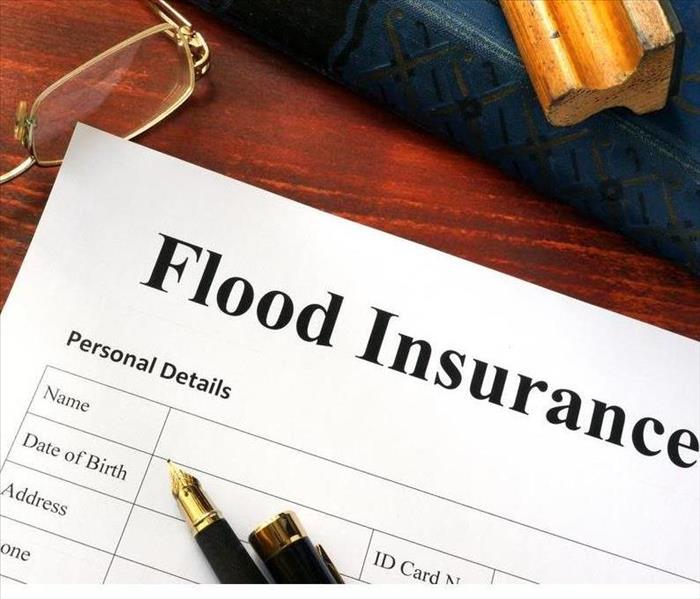 If an adjuster cannot see how bad the damage was, he or she may be less likely to settle a flood insurance claim for the full amount.
If an adjuster cannot see how bad the damage was, he or she may be less likely to settle a flood insurance claim for the full amount.
Is it necessary for an adjuster to inspect damage prior to mitigation?
Homeowners dealing with flood damage may wonder whether they should start mitigation before an adjuster arrives to assess losses. If there has recently been widespread flooding or severe weather in Beaumont, TX, adjusters may have a lengthy backlog. It can be worthwhile to mitigate damage as soon as possible. Here are a few pointers on starting mitigation for homeowners who plan to make a flood insurance claim.
Documentation Before Mitigation
A homeowner must capture the full extent of damage prior to mitigation. There are several useful forms of documentation:
• Photographs
• Video footage
• Professional estimates
This evidence will be necessary to support a flood insurance claim. Even if mitigation is underway when an adjuster arrives, proof of damage enables homeowners to obtain compensation for losses.
Provide Insurers With an Estimate
A professional estimate is also useful for making a claim. A one-stop damage mitigation and restoration company can provide a complete estimate. Insurers are more likely to accept an estimate calculated by a preferred vendor.
Schedule a Visit From an Adjuster
An adjuster will probably need to visit the property to process a claim. Homeowners should provide documentation and explain mitigation measures. Insurers require property owners to do everything in their power to limit primary damage and avoid secondary mold damage. Timely mitigation may make it easier to settle a claim.
It is crucial to document the worst of the damage caused by a flood or storm before taking mitigation measures. If an adjuster cannot see how bad the damage was, he or she may be less likely to settle a flood insurance claim for the full amount. Keep in mind that most standard homeowners policies exclude flood damage, and a separate flood policy is necessary. Relying on a company that provides both mitigation and restoration services will enable homeowners to give insurers a single estimate and expedite the claim process.




 24/7 Emergency Service
24/7 Emergency Service








